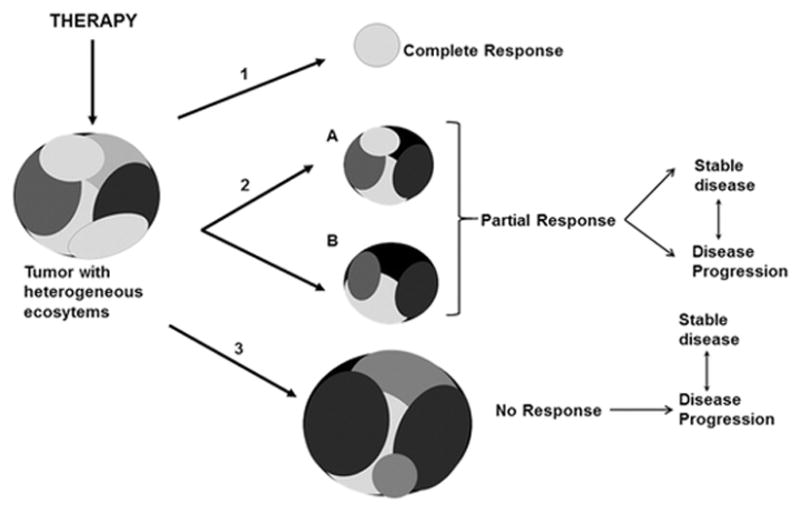Figure 3.

Tumors are comprised of heterogeneous ecosystems that have variable therapy sensitivities and the potential to influence growth, survival and therapy responses of neighboring tumor cells through cell-microenvironment mediated interactions. (1) Pathologic complete response, a surrogate endpoint that is predictive of long term disease-free survival, is associated with complete or near complete resolution of the lesion and potentially its heterogeneous landscape. (2) Partial response defined as a ≥30% decrease in tumor size could either result in the residual tumor remaining dormant or stable, or eventually progressing depending upon the compositions and activities of the residual tumor. (3) An increase or no change in tumor size is defined as a “no response” outcome where the most vulnerable tumor subpopulations are eliminated with potential enrichment of the tumor with ecosystems that are more or less heterogeneous and containing therapy resistant variants. In scenarios (2) and (3), the tumors could either attain a state of tumor homeostasis (stable disease) or imbalance (disease progression) depending upon the nature of reestablished tumor ecosystems.
